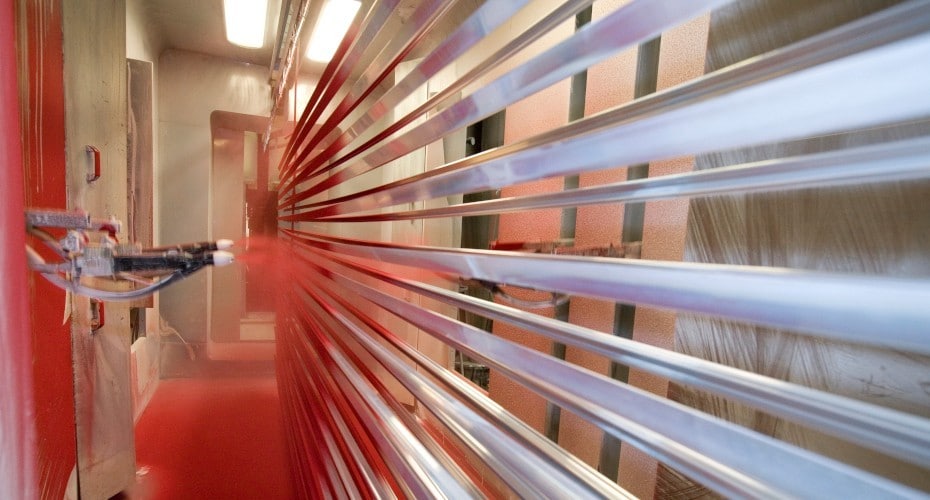When Dorothy first stepped out into Oz, audiences in the 1930s gasped. And it wasn’t because of the Munchkins (they were cute, but not all that impressive). It was because of the colour. The Wizard of Oz was one of the first movies at the time to be in colour – or ‘Technicolor’ as they called it at the time.
Colour is important. A room painted black is depressing, whereas the same room painted white is uplifting. And our world is awash with colour. In a single day, we see countless different hues that allow us to distinguish between different objects easily. Designers use colour too. Whether it’s an interior designer choosing a colour palette for a new building or a graphic designer crafting a new brand, a tremendous amount of care goes into selecting colours.
No-one can deny that colour is important. But have you thought about the colour of your industrial doors?
Many warehouse owners don’t pay any thought to the colour of their doors, but this can be a mistake. The colour of a door can communicate a message, whether a good one or a bad one. It can also be an opportunity for your door to stand out or match your branding.
Industrial doors are painted with a process called powder coating. Don’t worry if you’ve never heard of it, because in this blog post, we’ll look at powder coating in more detail, including its advantages and how it works.
What is powder coating?
When people think of paint, they think of paint that comes in a tin or a tube, the kind that’s applied with a paintbrush or roller. For many people, there isn’t even any other kind of paint.
But paint actually comes in many forms. One of these is a dry powder. A dry powder! We know what you’re thinking: how can paint stick if it’s not wet? Do you have to put water in it?
The answer is no – no water is needed. Here are the steps in powder coating:
- Pre-treatment. During the pre-treatment stage, a worker cleans the door to remove dirt or grease. This is important because any dirt or grease can stop the paint from sticking.
- Powder application. The next stage is where the worker uses an electrostatic gun to shoot powdered paint at the door. The paint sticks to the door by electrostatic charge.
- Curing. In this final stage, the worker heats the door at a high temperature. The heat creates a strong bond between the paint and the door, ensuring that the paint won’t come off.
The advantages of powder coating
Powder coating has several advantages over other paint techniques like spray paint and liquid paint.
- Strength. Paint applied by powder coating is very strong. The curing process ensures that the coating is tough and will stay on for longer. You won’t notice any peeling.
- Even coat. Powder coating applies paint evenly and smoothly, giving a professional finish. There’s no way a man with a brush and a tin of paint can compete.
- Doesn’t release volatile organic compounds. Powder coating is better for the environment than other types of painting. This is because it doesn’t release volatile organic compounds (VOCs), which are chemicals that can cause cancer and air pollution. Because of this, many environmentally-conscious companies are switching from spray paints to powder coating.
Now that you know all about powder coating, think about it next time you see a colourful industrial door!

